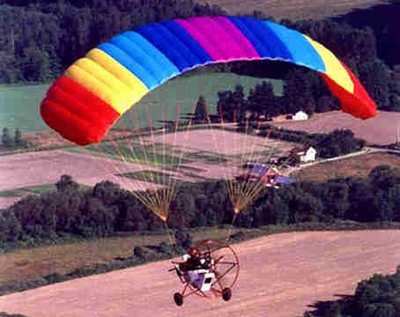When Flying Lightweight Recreational Aircraft It’s Fun To Fly Low And Slow, But The Regulations And Common Sense Need To Be Applied
When flying something like an ultralight, powered parachute, a trike, or an open-air flying machine, it’s hard to resist the temptation to fly low and enjoy the scenery. The issue is how low are you allowed to fly and what restrictions may apply to flying over something on the ground.

In a recent report from Castaic, CA, a powered parachute operator happened to fly over a criminal detention center. It seems that local law enforcement officials were concerned that this could be a drug dropping operation, and they launched a sheriff’s department helicopter to intercept the possible villain.
After the helicopter made a few passes around the powered parachute operator, he landed and explained to the sheriff’s that there was no ill intent and that the flight over the prison was also not intentional. As it turned out, this was a no-foul no-harm occurrence.
However, it does bring to mind the question of how low are we allowed to fly. In part, the answer to this question can be found in FAR 91.119. This regulation is basically broken into three groups which depend on whether you are flying…“anywhere, over congested areas, or over other than congested areas.”
The “anywhere” part of the rule simply says you must be high enough that if an engine fails the aircraft can be landed without undue hazard to persons or property. The “over congested areas” list the altitude requirements as a minimum of 1,000 feet above the highest obstacle within a horizontal radius of 2,000 feet of the aircraft. The regulation calls for aircraft flying over “other than congested areas” to remain no closer than 500 feet to any person, vessel, vehicle or structure. The regulation is little more detailed than this and the term “congested” is open to some interpretation. Of course, these limitations don’t apply to takeoff and landing.
These rules have been around for a long time, but there are some exceptions. Helicopters, powered parachute, and weight shift control aircraft can deviate from the basic rules listed above. For example, a powered parachute or weight-shift-control aircraft may be operated at lower altitudes provided the operation is conducted without hazard to persons or property on the surface.
The regulations really set the guidelines and common sense dictates the application. Despite the fact that the rules allow low flight in powered parachutes and weight shift control aircraft doesn’t negate the fact that farmers do not consider “cow tipping” to be a funny.
Regarding the flight over the prison, it’s not covered in the FAR’s although it makes sense for local officials to be concerned about this sort of operation. When the rules don’t cover a particular situation, courtesy and common sense usually work pretty well.
(Image from file)
 Aero-News: Quote of the Day (07.11.25)
Aero-News: Quote of the Day (07.11.25) ANN's Daily Aero-Term (07.11.25): Permanent Echo
ANN's Daily Aero-Term (07.11.25): Permanent Echo ANN's Daily Aero-Linx (07.11.25)
ANN's Daily Aero-Linx (07.11.25) NTSB Final Report: Schweizer SGS 2-33A
NTSB Final Report: Schweizer SGS 2-33A NTSB Prelim: Aeronca 7AC
NTSB Prelim: Aeronca 7AC



